A better portfolio means more clients, job opportunities, and collaborations. Whether you're a designer, developer, writer, or freelancer – this is important.
But let’s be honest: building a portfolio website can feel overwhelming.
That’s where Lovable comes in. With just the right prompts, you can generate a professional, one-page portfolio website in minutes—no coding required.
TL;DR: What You'll Learn
- Why you need a portfolio website – It builds credibility and showcases your best work.
- How to create one effortlessly – Lovable’s AI-powered prompts do the heavy lifting.
- What makes a great portfolio – Clarity, simplicity, and well-structured content.
- Examples & prompts – Get started instantly with pre-built Lovable prompts.
Why You Need a Portfolio Website
A portfolio website is more than a collection of past work—it’s your personal brand.
Whether you’re a developer showcasing projects, a designer presenting visuals, or a writer compiling articles, your portfolio:
- Establishes credibility – Shows you’re serious and professional.
- Helps you stand out – Makes a strong impression in a competitive market.
- Allows direct contact – Potential clients or employers can reach out easily.
- Centralizes your work – Acts as a hub for all your projects and social links.
And the best part? With Lovable, you don’t need to code or spend hours designing a site from scratch.
How to Create Your Portfolio Website with Lovable
Step 1: Define Your Portfolio’s Purpose
Before jumping in, ask yourself:
- Who is my audience? (Clients, employers, collaborators?)
- What am I showcasing? (Designs, code, writing samples?)
- What action do I want visitors to take? (Hire me, contact me, view my work?)
Having clarity here helps Lovable generate the perfect portfolio for you.
Step 2: Generate Your Portfolio Website with Lovable
Creating a polished portfolio has never been easier. Just copy-paste a prompt into Lovable, and in seconds, you’ll have a fully functional website.
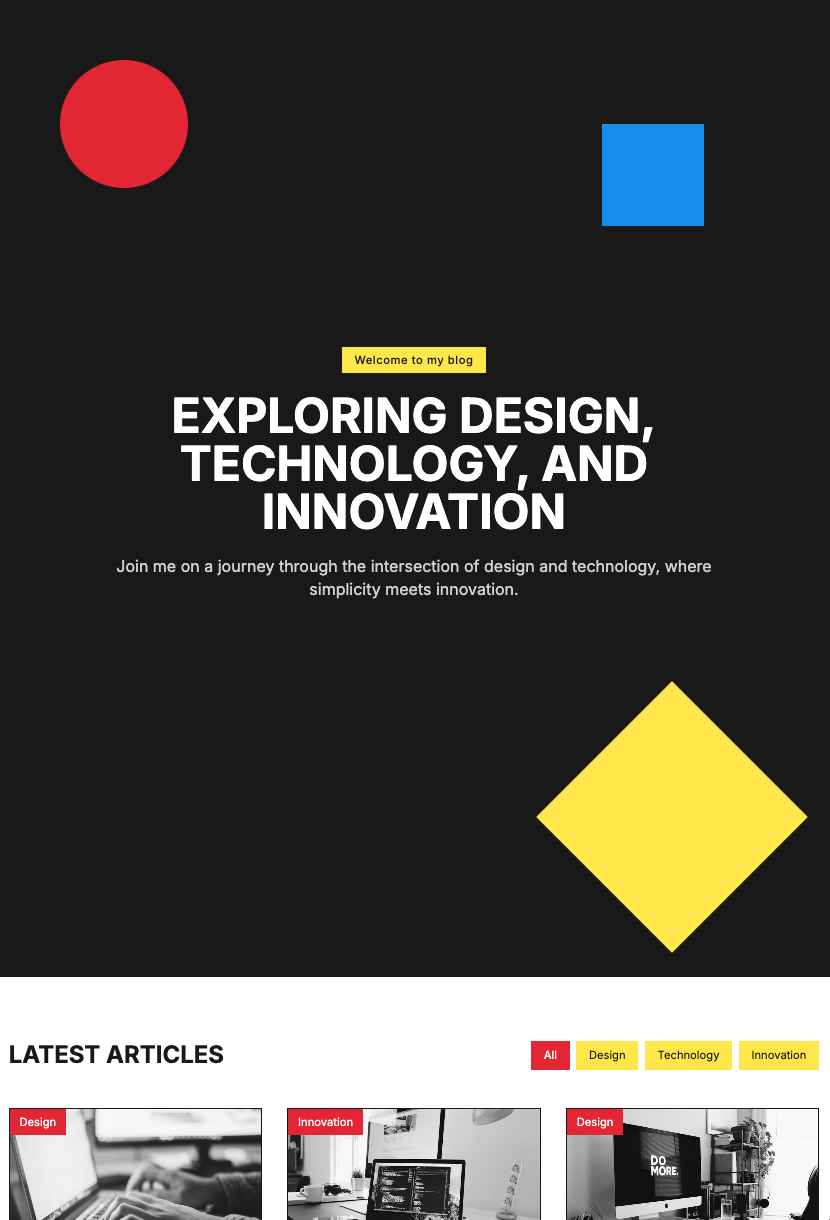
Portfolio Website Prompt Examples
- Basic Portfolio: A one-page site for a front-end developer named Alex, featuring projects, a bio, and contact details.
- Minimalist Designer Portfolio: A clean, gallery-style showcase for a graphic designer named Emma.
- Writer’s Portfolio: A sleek website for a content writer named Liam, with featured articles and past client logos.
- Developer Portfolio with Blog: A portfolio for John, featuring GitHub projects, a personal blog, and dark mode.
- Freelancer Portfolio with Case Studies: A freelancer portfolio for Sophia, including testimonials and project inquiries.
- Freelancer Portfolio with Case Studies: Build a freelancer portfolio for Sophia, including testimonials, case studies, and a project inquiry form.
- Photographer’s Portfolio: A visually striking site for Noah, with high-resolution galleries and a booking form.
- Illustrator’s Portfolio: A vibrant portfolio for Ava, with a scrolling artwork showcase and commission requests.
- UI/UX Designer Portfolio: An interactive showcase for Ethan, featuring prototypes and case studies.
- 3D Artist Portfolio: Create a portfolio website for a 3D artist named Mia, with embedded 3D models, project breakdowns, and an animated intro.
- Motion Designer Portfolio: Build a portfolio for a motion designer named Oliver, featuring embedded video reels, project highlights, and a collaboration inquiry form.
- Product Designer Portfolio with Testimonials: Generate a portfolio website for a product designer named Chloe, showcasing product redesigns, client testimonials, and an interactive showcase of work.
- Web Developer Portfolio with Interactive Elements: Create a portfolio for a web developer named Lucas, with animated transitions, interactive UI elements, and a personal blog.
- Creative Director Portfolio with Case Studies: Build a portfolio for a creative director named Isabella, including detailed case studies, brand campaigns, and a portfolio reel.
- Music Producer Portfolio: A portfolio for Daniel, featuring embedded audio samples and booking requests.
- Filmmaker Portfolio: A filmmaker’s portfolio for Sophia, including short films and festival awards.
- Personal Brand Portfolio: Build a personal branding website for a thought leader named Benjamin, featuring keynote speeches, a blog, and links to media appearances.
- E-Sports Player Portfolio: Create a portfolio for a professional e-sports player named Ryan, featuring tournament achievements, gaming highlights, and sponsorship opportunities.
- AI Researcher Portfolio: Build a portfolio for an AI researcher named Victoria, showcasing academic papers, AI projects, and speaking engagements.
- Startup Founder Portfolio: Generate a personal website for a startup founder named Nathan, featuring past ventures, investor updates, and a mission statement.
Simply copy and paste any of these prompts into Lovable—you’ll have a fully functional site in seconds.
Step 3: Structure & Personalize Your Portfolio
Lovable provides a strong foundation, but you can personalize it by:
- Updating your bio with a compelling personal statement.
- Adding custom branding elements (images, fonts, colors).
- Linking to external work like GitHub, Dribbble, or Medium.
- Ensuring mobile responsiveness for a smooth user experience.
Your portfolio should be unique to you—make sure it reflects your style and personality.
Step 4: Give Your Portfolio a Unique Twist
A digital portfolio is an extension of your brand. Here’s how to make it memorable:
- Personal Touch: Use a high-quality headshot to create a connection.
- Custom Fonts & Colors: Reinforce your style with a consistent visual identity.
- Logo & Branding: A simple, memorable logo adds a professional edge.
Step 5: Spread the Word & Promote Your Portfolio
Your portfolio is live—now it’s time to get it in front of the right people!
- Add it to your LinkedIn profile – Make it easy for recruiters and clients to find you.
- Include it in your email signature – A subtle but effective promotion.
- Share it on social media – Extend your reach across platforms.
- Use a QR code on business cards – A quick scan makes networking effortless.
Best Practices: 15 Tips for an Outstanding Portfolio
To truly stand out, follow these expert tips:
- Keep it simple – Avoid clutter; focus on what matters.
- Use a clean layout – Easy navigation = better engagement.
- Showcase your best work – Quality over quantity.
- Tell a story – Let visitors understand your journey.
- Use high-quality visuals – Low-res images kill credibility.
- Make contact easy – Include email, socials, or a form.
- Highlight your process – Explain how you solve problems.
- Optimize for SEO – Use relevant keywords for searchability.
- Ensure mobile compatibility – Most visitors will check on their phones.
- Get a custom domain – A personal URL (e.g., yourname.com) boosts credibility.
- Keep it updated – Refresh with new work regularly.
- Include testimonials – Build trust with social proof.
- Simplify navigation – Make it effortless to browse.
- Promote it actively – A portfolio won’t work if no one sees it!
- Test it on different devices – Ensure a smooth experience everywhere.
10 Inspiring Digital Portfolio Examples
Seeing great portfolios can spark ideas for your own.
1. Model Digital Portfolio
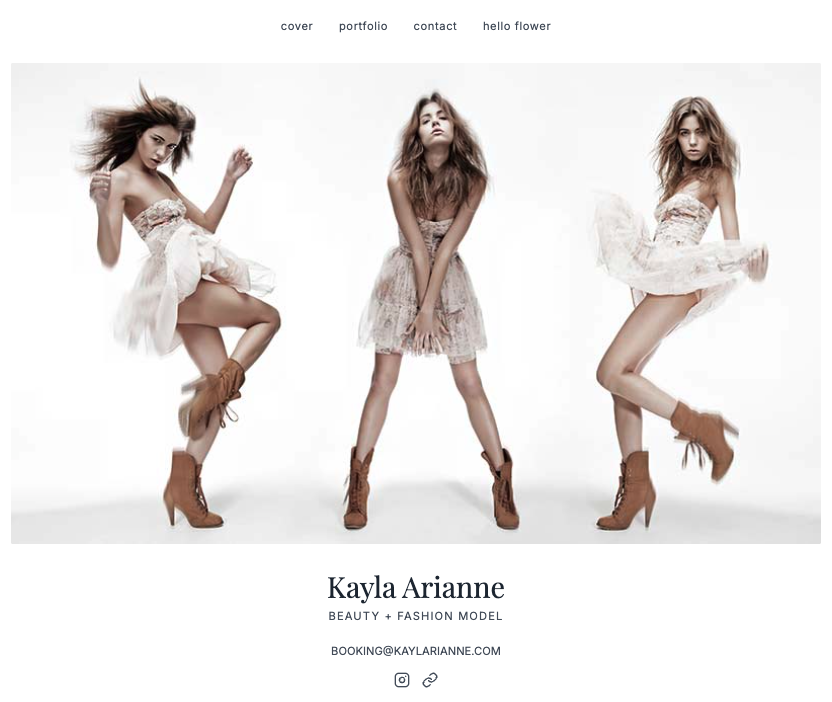
Key Features: Clean, structured layout, high-quality imagery, and casting-friendly organization.
Gone are the days of physical portfolios—modern models showcase their work through polished, digital galleries. A masonry grid layout makes high-resolution shots easy to browse, while a "digitals" section provides key elements like makeup-free headshots, silhouette shots, and measurements. Minimal text keeps the focus on visuals, making it effortless for casting agents to evaluate talent.
2. Interior Designer Portfolio
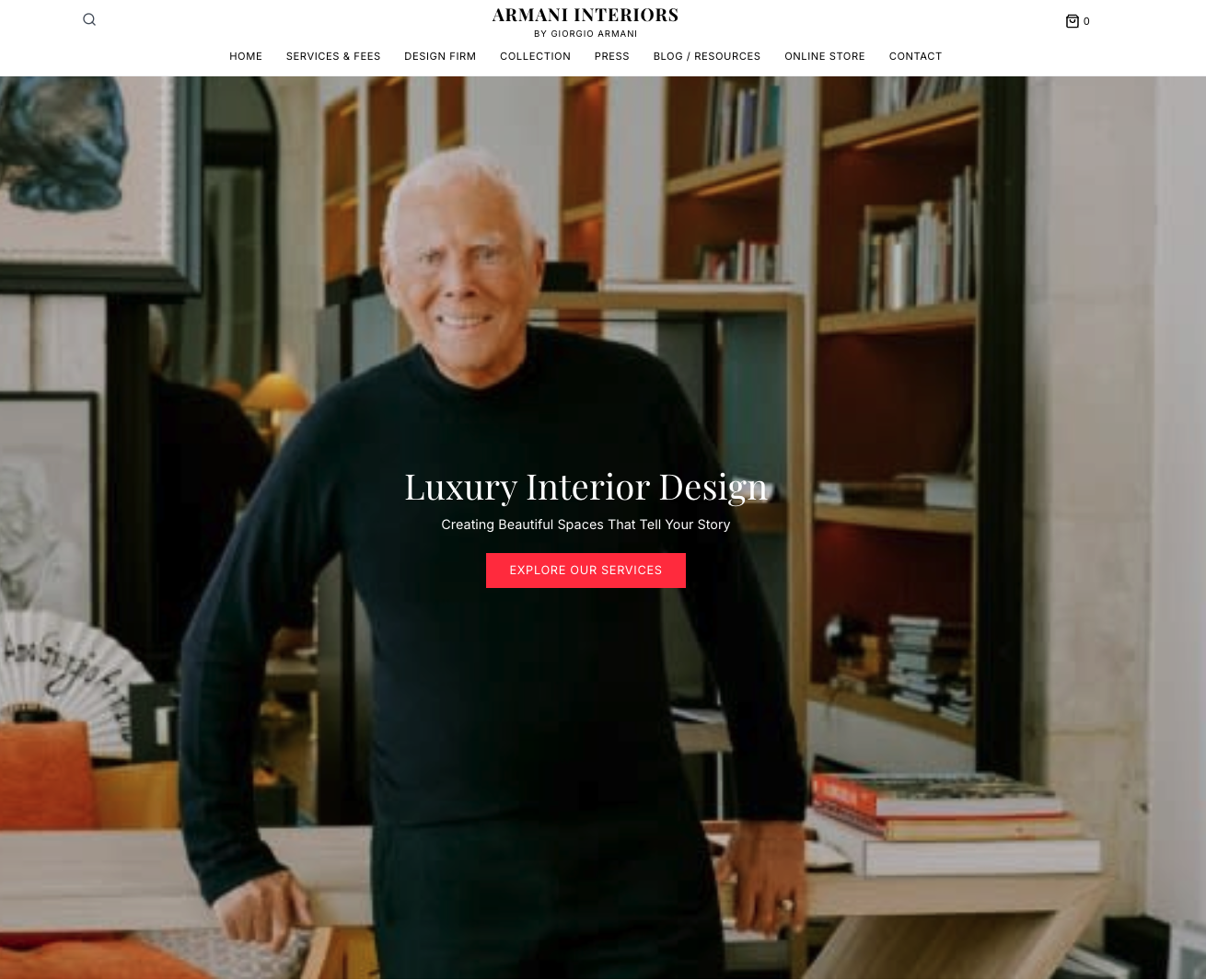
Key Features: Storytelling visuals, full-width slideshows, and intuitive navigation.
A great interior design portfolio isn’t just about displaying projects—it’s about telling a visual story. High-impact images highlight the designer’s style, while full-width slideshows showcase multiple perspectives without overwhelming visitors. A well-balanced mix of aesthetic appeal and structured navigation ensures potential clients can quickly grasp expertise and project scope..
3. Photographer Portfolio

Key Features: Immersive visual experience, minimalist layout, and monetization options.
A photographer’s portfolio should feel like an art gallery, where the work takes center stage. A minimalist design with soft background tones enhances image clarity. Including published work PDFs builds credibility, while integrating eCommerce features (like print-on-demand) turns a portfolio into a sales channel.
4. Writer Digital Portfolio
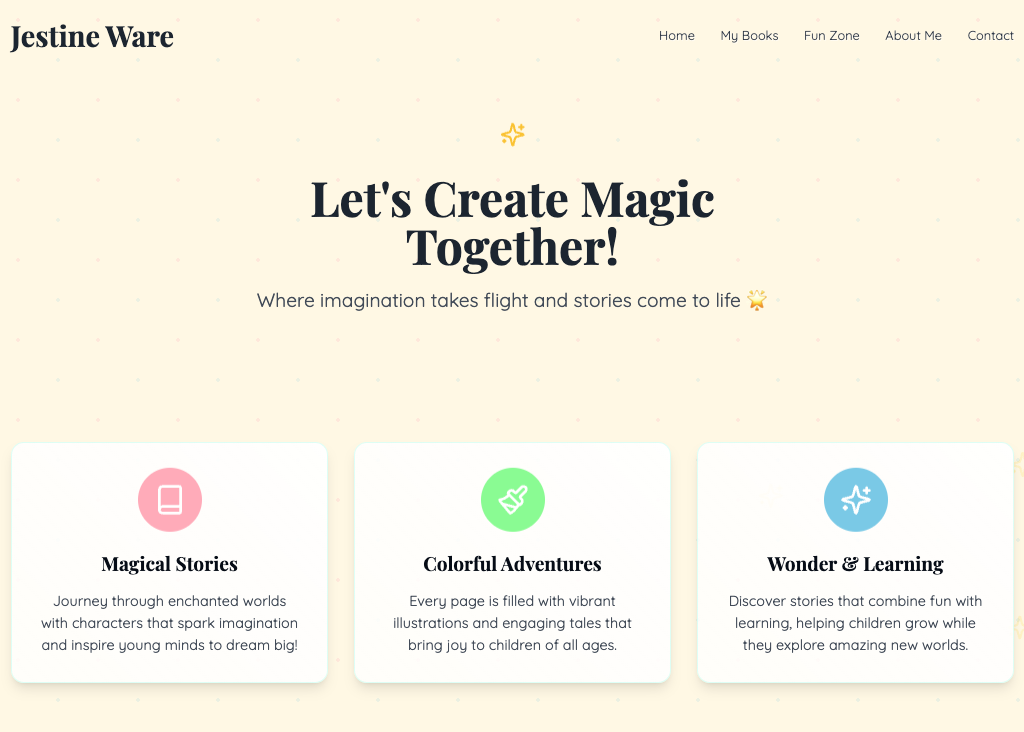
Key Features: Clean structure, transparent service menu, and easy client conversion.
Freelance writers must showcase versatility and credibility. This portfolio features a compelling homepage with key achievements, easy navigation through articles and past work, and a transparent service menu with clear pricing. This setup helps convert visitors into clients by eliminating friction in the hiring process.
5. Academic Portfolio
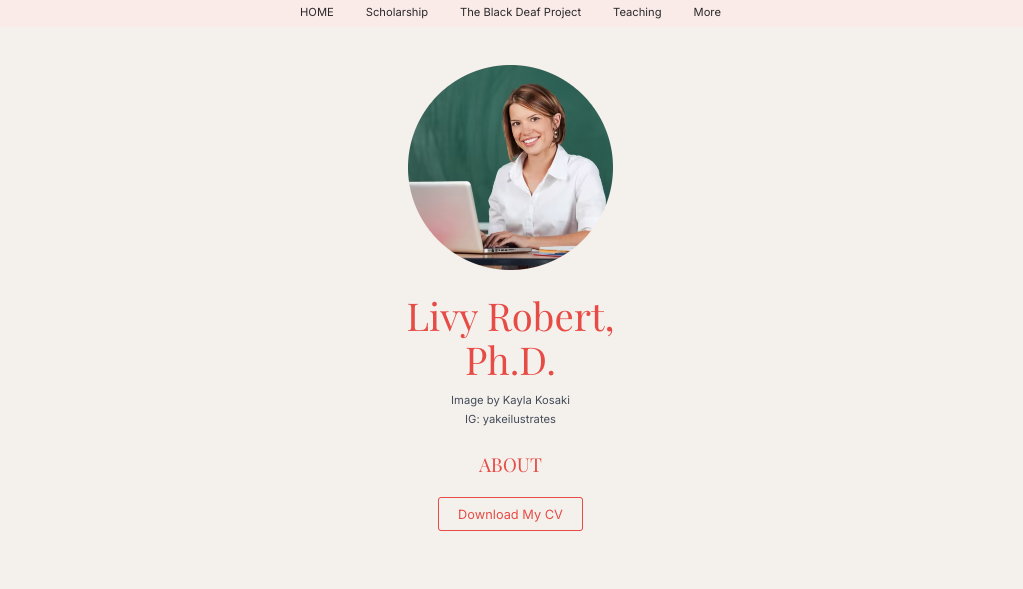
Key Features: Professional yet personal layout, career highlights, and customized branding.
An academic portfolio goes beyond research papers—it should reflect the individual’s scholarly journey. This example effectively balances professionalism and personality, using engaging visuals and warm design elements to reinforce a research focus. Customizing aesthetics based on the subject area (e.g., vibrant for early education, refined for university-level research) enhances its impact.
6. Graphic Designer Portfolio
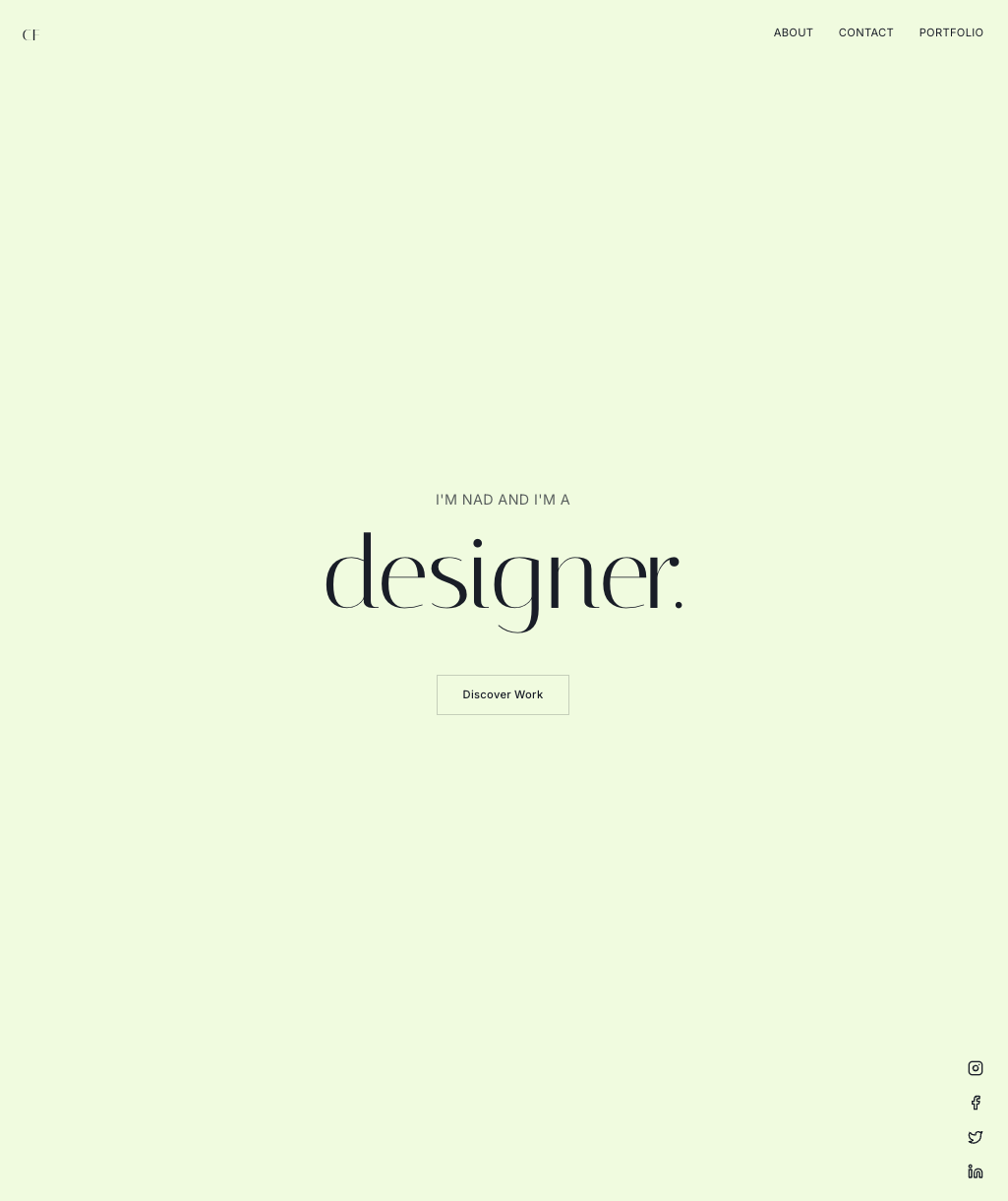
Key Features: Bold typography, animations, and interactive design process insights.
For graphic designer, the portfolio itself should be a testament to creativity. This portfolio leverages striking typography and motion graphics while maintaining usability and clarity. Embedded videos of the design process add depth, demonstrating problem-solving abilities and technical expertise. A personalized logo crafted from initials enhances branding.
7. Cinematographer Portfolio
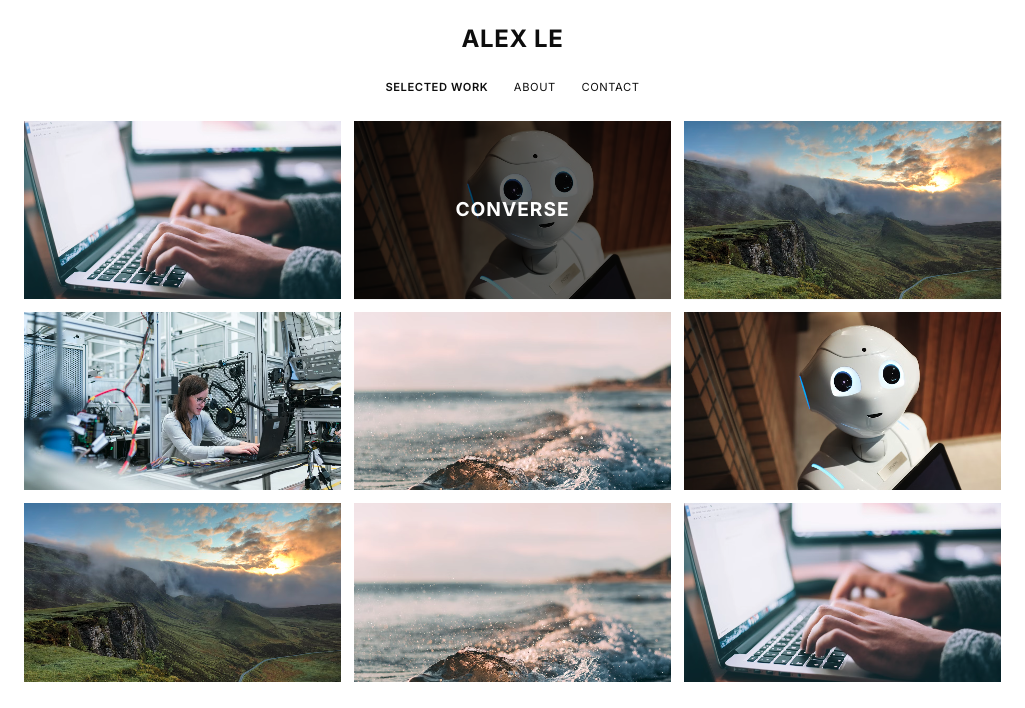
Key Features: Short, interactive video previews and structured storytelling.
Traditional reels can feel overwhelming, but this portfolio optimizes engagement by segmenting projects into short, hover-to-play clips. Carefully selected thumbnail previews make each clip visually compelling, while an automatic pause on mouse-out prevents distracting audio clutter. This structured approach makes it easy for potential clients to assess cinematography style quickly.
8. Marketer Portfolio
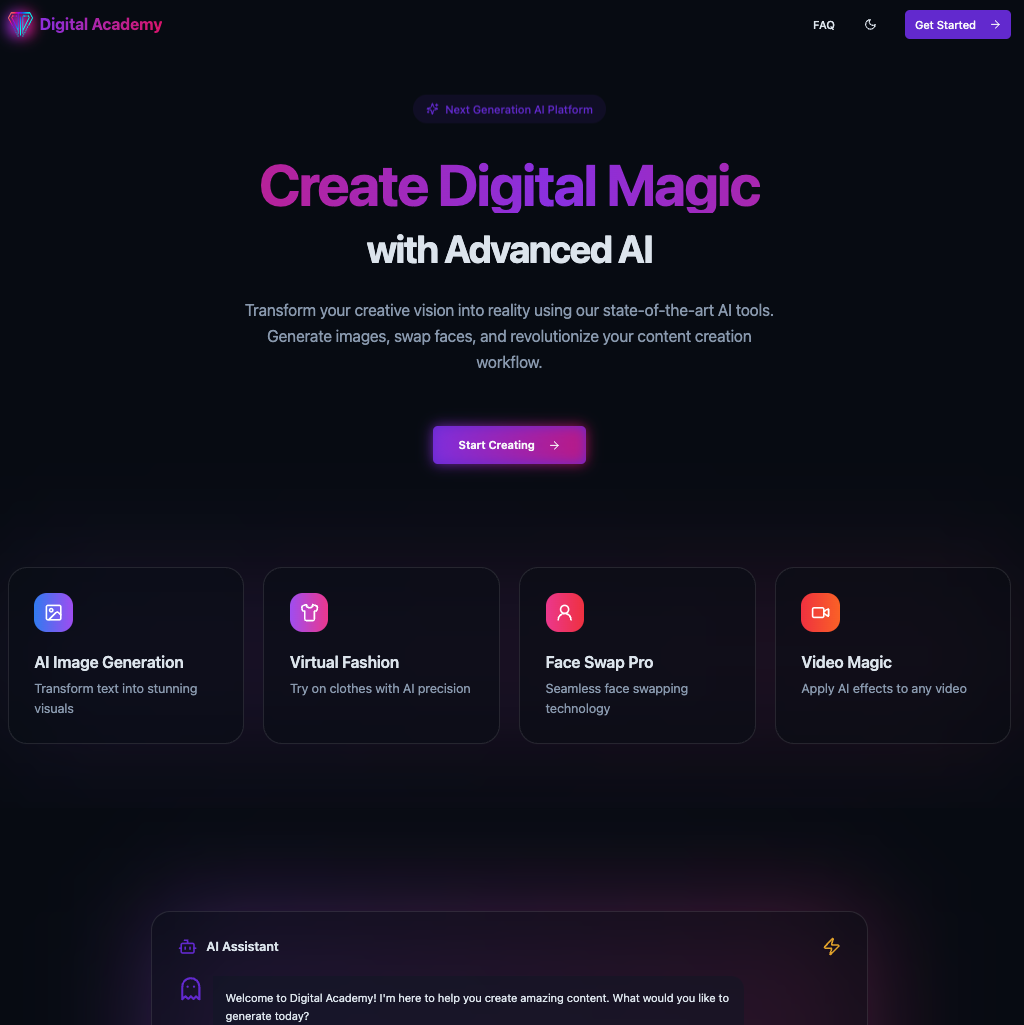
Key Features: Bold branding, data-backed case studies, and strategic testimonials.
Many marketers struggle with self-promotion, but this portfolio does it right. It features personality-driven case studies, visually striking speech bubbles for testimonials, and a results-driven approach with data-backed storytelling. A clean, structured layout ensures that impact is easy to digest.
9. Animation Digital Portfolio

Key Features: Dark-mode design, animated storytelling, and in-depth project insights.
Animation portfolios benefit from dark backgrounds, making visual storytelling more striking. Enlarged project presentations highlight intricate details, while dedicated pages break down the creative process. Instead of being a simple gallery, this portfolio guides the visitor through the animator’s artistic journey.
10. Illustrator Portfolio
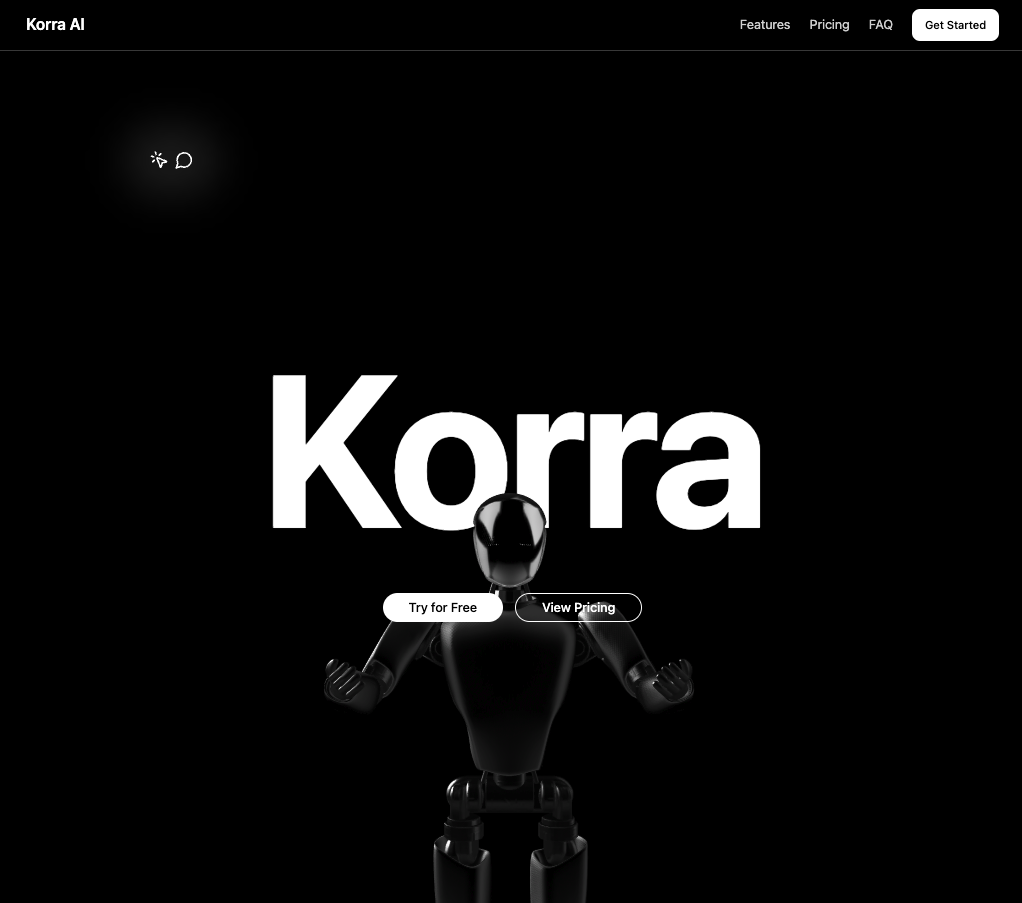
Key Features: Brand recognition, interactive elements, and direct client communication.
This portfolio integrates strong branding, industry recognition, and client engagement tools. A dedicated press page highlights media features, reinforcing credibility. A clean yet impactful personal logo strengthens brand identity, while an interactive chat box encourages direct communication with potential clients.
This example demonstrates how artistic expression and smart marketing can work hand in hand for long-term success.
Get Inspired & Build Your Own Portfolio
You can remix any of the strategies from these portfolios and apply them to your own. Whether you're a designer, writer, developer, or creative professional, there are endless ways to craft a standout portfolio.
Final Thoughts: Your Portfolio is Your Future
Your portfolio isn’t just a website—it’s your ticket to new opportunities.
With Lovable, you can build a professional, polished portfolio in minutes using simple prompts. Whether you're a designer, developer, freelancer, or creative, a strong online presence sets you apart.
Ready to launch your portfolio? Try Lovable today and go live in no time.
Frequently Asked Questions (FAQ)
How should a portfolio start?
A strong introduction sets the tone for your portfolio. Begin with:
- A compelling bio – Who you are and what you do.
- Contact information – Make it easy for people to reach you.
- Your goals & purpose – Explain why you created your portfolio and what you aim to achieve.
Tip: A short statement of purpose can provide clarity and direction for visitors.
What makes a good portfolio?
A standout portfolio is well-structured, engaging, and easy to navigate. Keep these principles in mind:
- Be selective – Showcase only your best work.
- Stay organized – Arrange projects logically for easy browsing.
- Provide clear descriptions – Context is key! Explain your work in concise, compelling terms.
- Maintain a professional look – A polished, clean design enhances credibility.
- Express your personality – A portfolio should reflect your unique style and creativity.
How do I create a student portfolio?
A student portfolio highlights academic achievements, projects, and personal growth. Follow these steps:
- Define your purpose & audience – Is it for college applications, job hunting, or showcasing projects?
- Curate your best work – Include essays, research, projects, or creative work.
- Provide context – Explain your contributions and learning experiences.
- Use an intuitive design – Keep it visually appealing and easy to navigate.
- Share it strategically – Send it to professors, recruiters, or potential employers.
How do I improve my portfolio?
Keep your portfolio fresh by regularly updating it with:
- New projects & accomplishments – Show growth over time.
- Optimized performance – Ensure fast loading times for smooth navigation.
- Alignment with career goals – Tailor your portfolio as your path evolves.
- User feedback – Test it with others and refine based on input.
How to make a portfolio for job hunting?
A job-seeking portfolio should sell your expertise effectively. Here’s what to include:
- Best work samples – Only feature high-impact projects.
- Tailored content – Align your portfolio with the role you’re applying for.
- Professional design – Keep it clean, readable, and mobile-friendly.
- Resume section – Include a downloadable or embedded CV.
- Easy contact options – Make reaching out seamless for potential employers.
How to make a portfolio for my art?
An art portfolio should visually capture your unique style and storytelling. Essential elements:
- High-quality images – Poor resolution can ruin presentation.
- Diverse yet cohesive pieces – Showcase your range while maintaining a signature style.
- Artist statement – Share the inspiration, techniques, and themes behind your work.
- Clean layout – Let the art shine without distractions.
How to build a portfolio for modeling?
A modeling portfolio should highlight versatility and experience.
- High-quality professional shots – Include headshots, full-body, and editorial-style images.
- Diverse styles – Showcase casual, high fashion, fitness, and lifestyle shots.
- Experience & collaborations – Feature brands, photographers, or agencies you’ve worked with.
- Easy navigation – A clean design ensures casting directors can browse effortlessly.
How do I build up my portfolio?
If you're starting out, focus on gaining experience and showcasing growth:
- Take on freelance projects or internships – Build credibility with real work.
- Collaborate with others – Join creative teams or open-source projects.
- Continuously update – Add new work as you develop skills.
- Seek feedback – Learn from peers or mentors to refine your portfolio over time.
What does a portfolio look like?
A strong portfolio should be:
- Visually appealing – Clean, modern design with high-quality images.
- Intuitive – Simple navigation, easy to browse.
- Content-focused – The work should be front and center, with supporting descriptions.
- Personalized – Reflecting your style, skills, and personality.
Do I need a physical portfolio?
Digital portfolios are the industry standard, but physical portfolios can still be valuable for:
- Interviews & in-person meetings – Tangible materials can leave a lasting impression.
- Showcasing printed work – Ideal for photographers, graphic designers, and artists.
- Traditional industries – Some professions still value handheld portfolios.
Best approach? Have both! A digital version for convenience, and a printed version for select opportunities.



